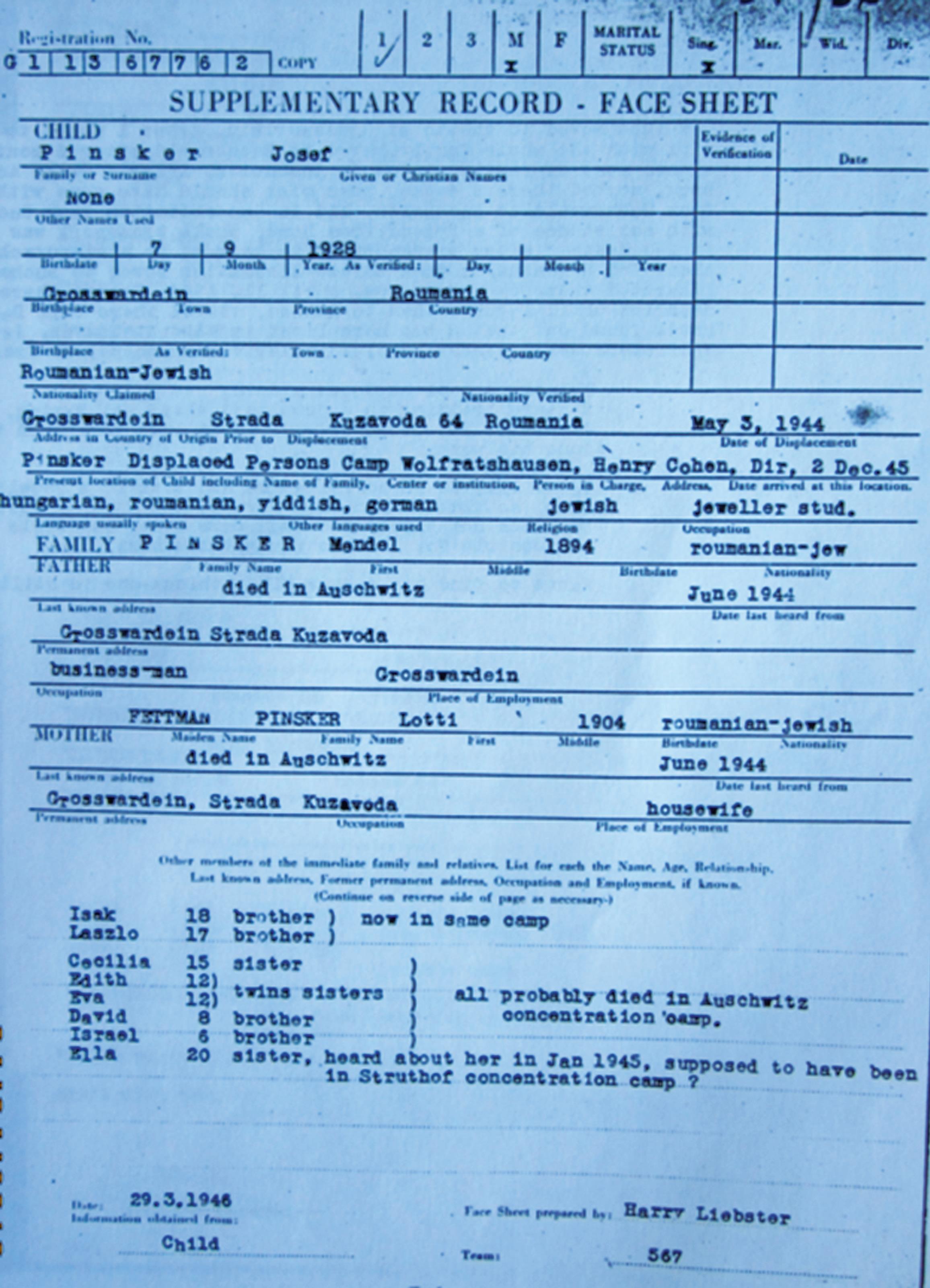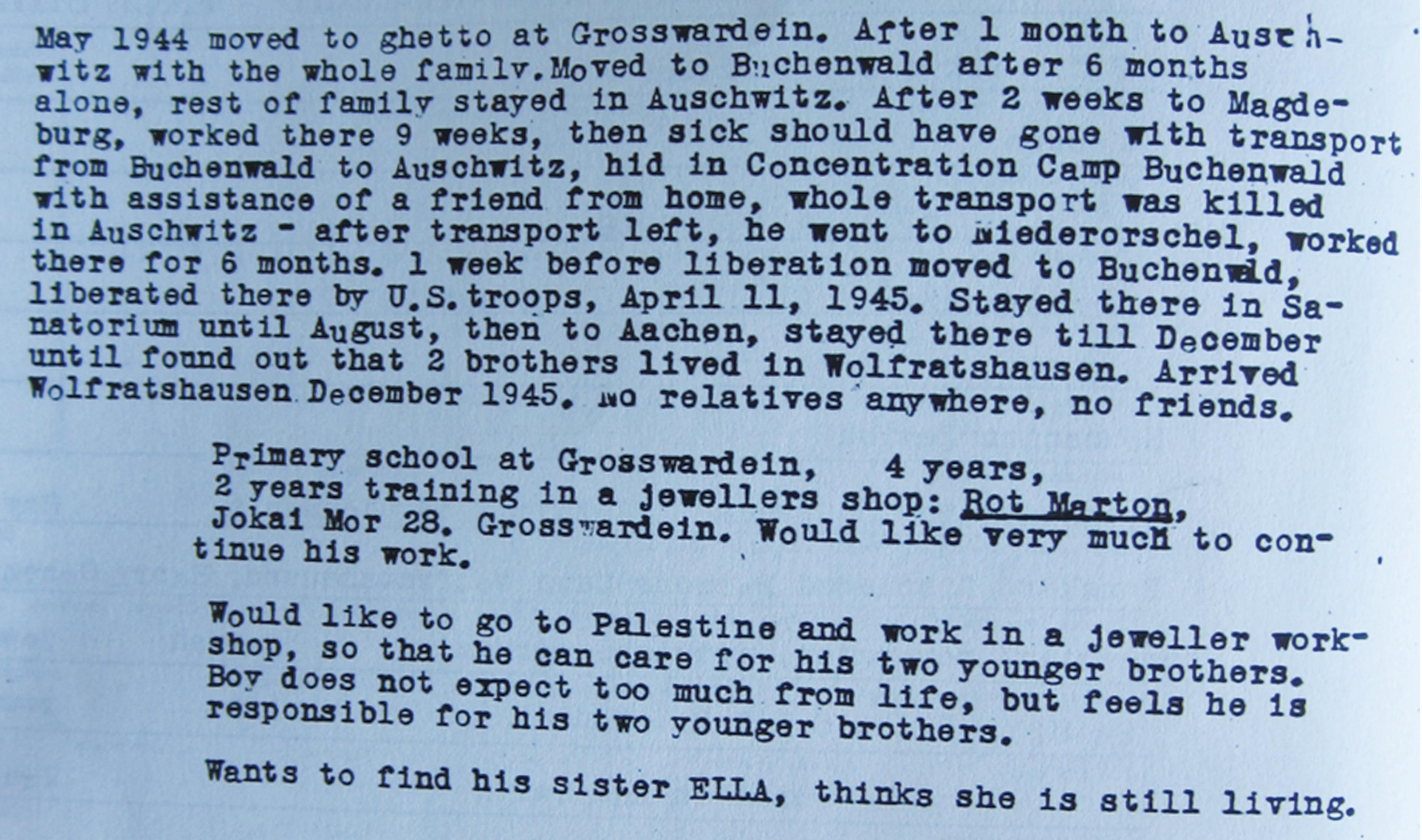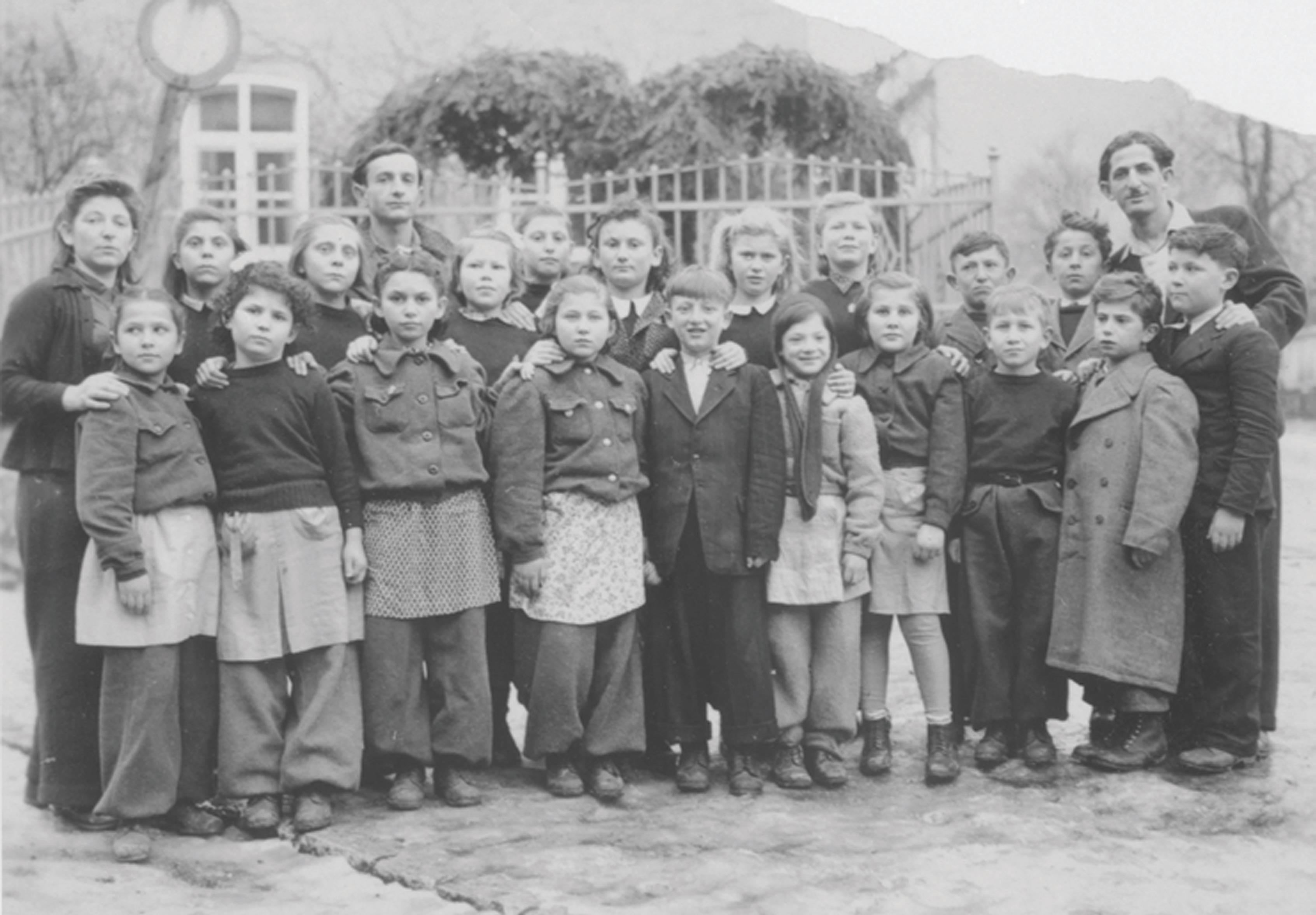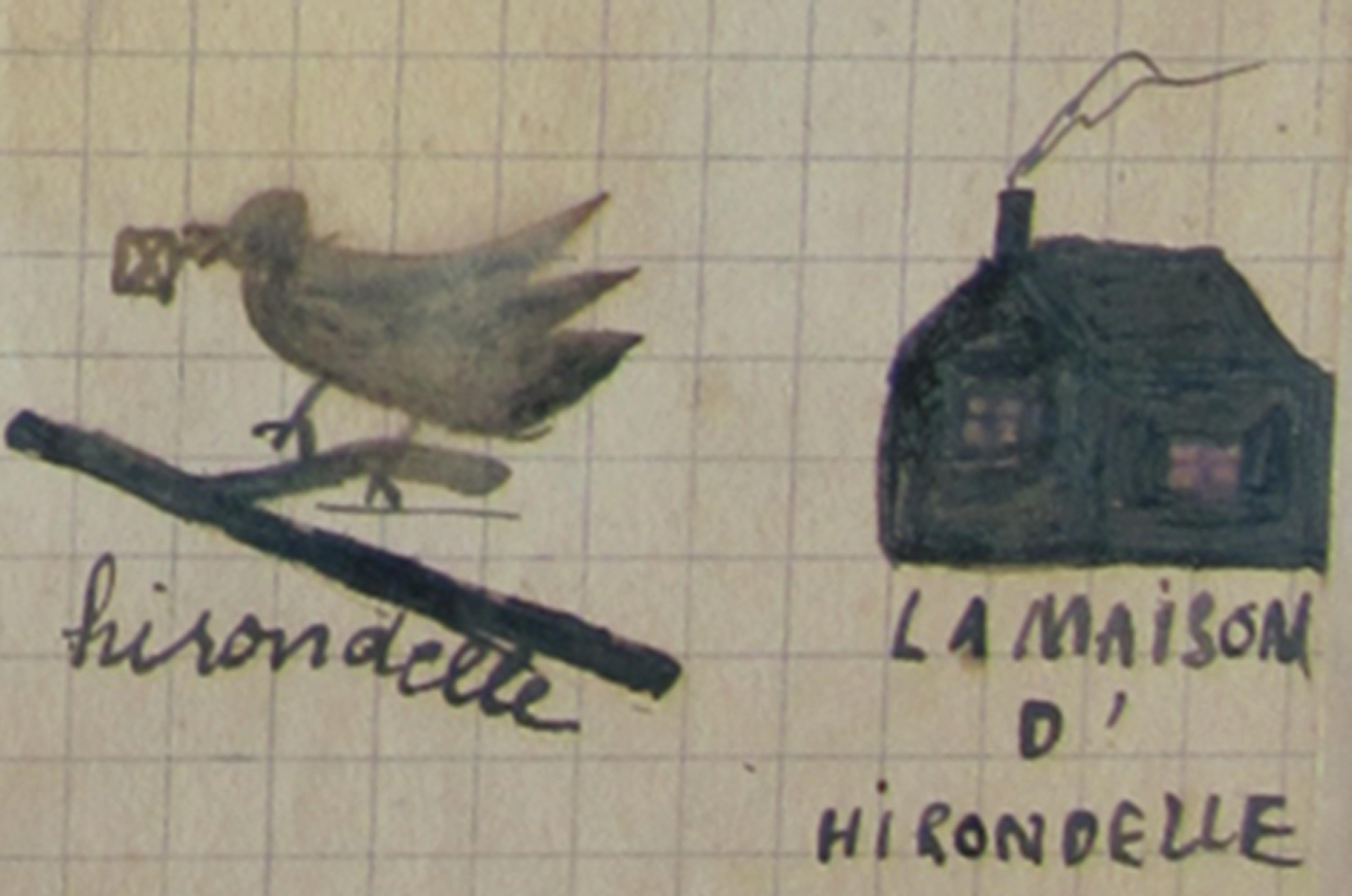New Beginnings
At the end of the war, millions of people found themselves outside of their home country: Holocaust survivors, slave labourers, refugees, expellees, evacuees, and also prisoners of war. Displaced persons (DP) camps provided temporary housing. The authorities were faced with the huge task of repatriation.
Especially the Jewish DPs often did not know where their relatives were, or even whether they were still alive. Aid organisations tried to help unite family members. Most Jews wanted to leave Europe to start a new life in Palestine or the USA.
Below are excerpts from a file on Josef Pinsker, a young Jewish displaced person, from the records compiled by the United Nations Relief and Rehabilitation Administration (UNRRA) in the Föhrenwald DP camp in Wolfratshausen near Munich. This camp was one of the largest in the American Zone of Occupation. It existed from 1945 until 1957. From October 1945, it housed only Jewish DPs.






